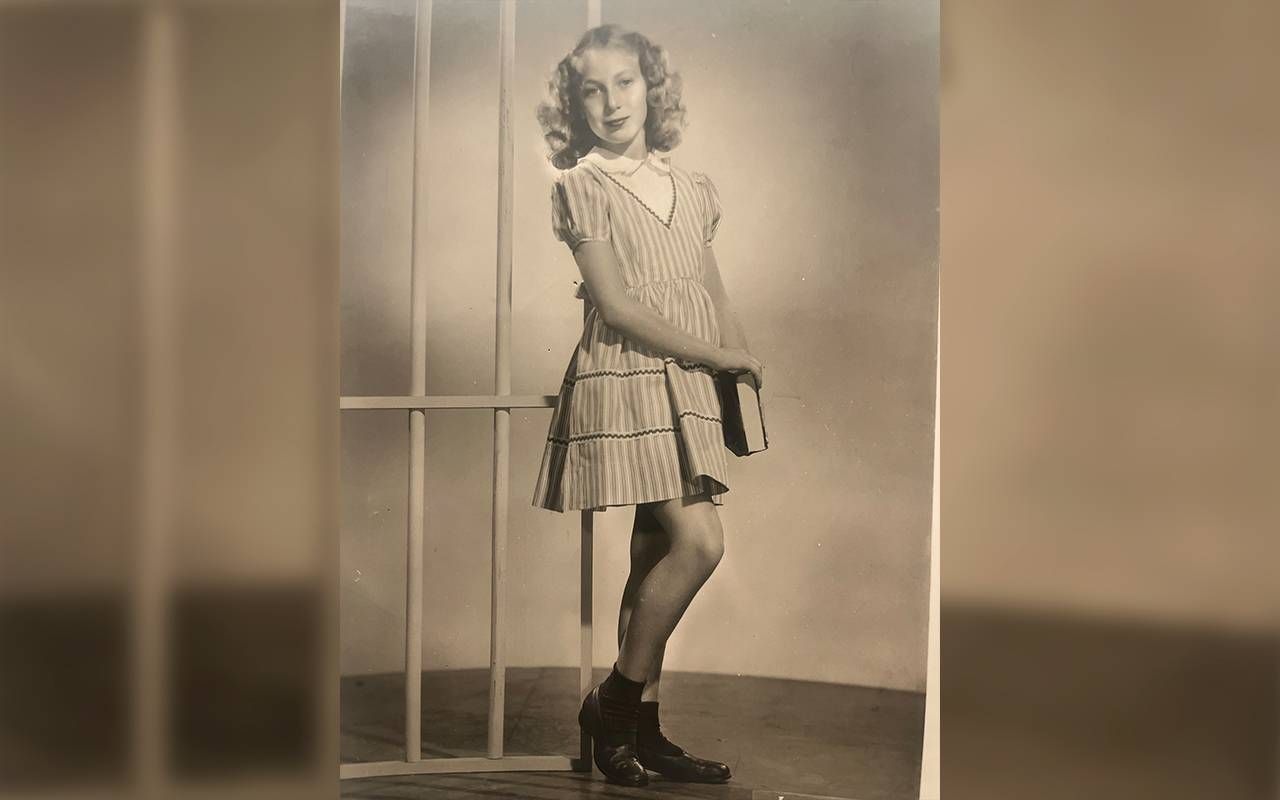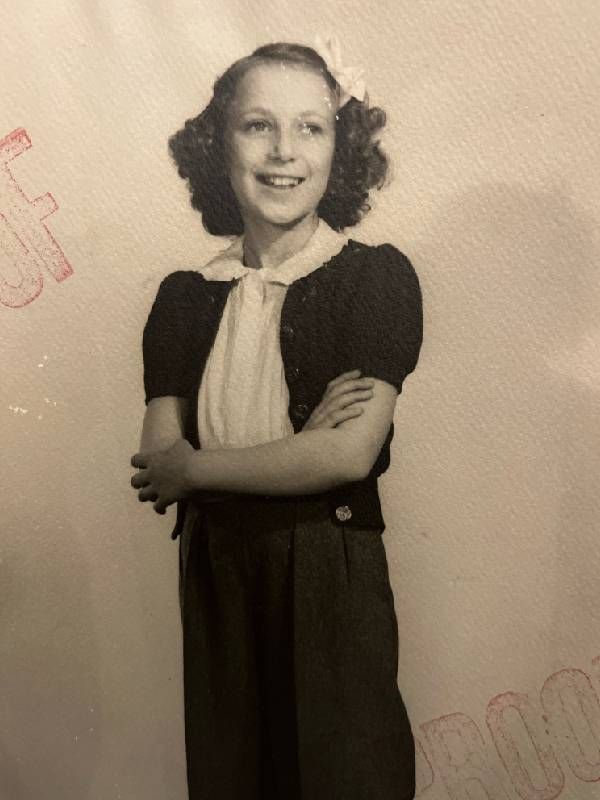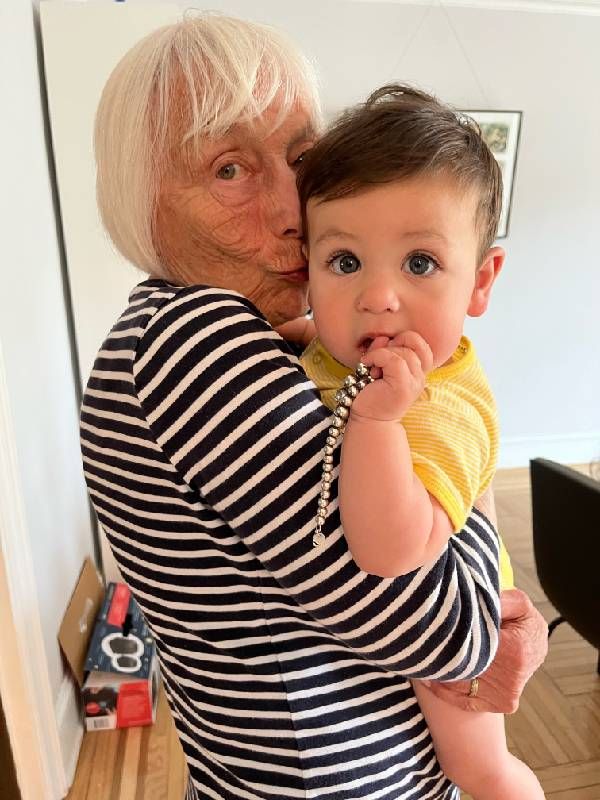My Mother-in-Law, the Tap Dancing Showgirl
My wife's 91-year-old mom shares stories of her early days as a tap-dancing showgirl and TV performer

Approaching 91, my mother-in-law is still kicking. She was asked to be president of her senior living residence in lower Manhattan. She edits a political blog for a 100-year-old friend. She goes to more museums, concerts, theater and ballet performances in a month than I have in the past four years. She rides the subway to visit her great-grandchildren (my grandchildren!), and always has her head in a big book or crossword, which she invariably finishes. All that and she makes the best potato pancakes on the planet.
She won awards and grants, and was pals with Gloria Steinem and other feminist trailblazers.
That Barbara was super accomplished was never a question. A pioneer in early child education, she's authored multiple books on bullying, integrating science into child's play, nonsexist teaching, even helping boys learn better. She won awards and grants, and was pals with Gloria Steinem and other feminist trailblazers.
Lately, she's revealed a new side of herself as a memoirist, sharing accounts of her early life as an itinerant tap dancer, chorus girl and TV performer, following a childhood beset by family illness and financial troubles. Her well-crafted "Fragments," as she calls them, show that no matter how well we know someone close to us, there are layers of personal history contributing, like clay, to the role model they become. They're also a reminder to mine the back stories of our older family members while there's still time.
Almost Put Up for Adoption
Barbara's arrival in 1933 did not look promising. "Mother already had one abortion and now another unwanted baby was on the way," she writes. Her father's dry-cleaning business had collapsed in the Depression and her mother became a "nervous wreck" following the near-fatal meningitis of one of her other two daughters.

Almost put up for adoption, Barbrara's grandparents intervened and offered to raise the third child. Born with an infected navel and severely underweight from her mother's chain smoking, Barbara lived with her grandparents for five years after her father relocated to California with her two older sisters (Barbara surmises now that her mother suffered a breakdown). It was a blessing, thanks to an Irish nanny who showered her with love and trips to the park, though Nanny also claimed her nightly dose of Milk of Magnesia was ice cream.
The family of five reunited in 1938, crammed in a three-room apartment in northern Manhattan. "Life was very tense," Barbara writes. "My mother sewed hats at home to bring in much-needed extra money. She worked late into the night, in the kitchen since my father slept in the living room. She often seemed angry at my sisters. Once when they did not meet her standards for dishwashing, she made them do everything over again — lots of yelling."
But suddenly, Barbara was her mother's pet and showpiece, given tap lessons and thrust into the life of a "theater kid." Performing at a bungalow colony's casino night, wearing a "blue-checked, short taffeta costume," she recalls doing a hat dance "baring one shoulder and peering behind me with a coy look — how inappropriate for a seven-year-old." But it brought down the house. Acting and elocution lessons followed and she learned to recite poetry and dance with flowing scarves. She was cast as a refugee in a play for Russian war relief, arranged by a great aunt who was a Communist sympathizer.
A Stage Name and Vying to be Miss Video Venus
Soon she had an agent and was auditioning for radio spots at Young & Rubicam, though her voice was deemed too squeaky. Given the stage name Barbara Fields (rather than her last name of Rosenfeld), she landed a bit part in a Broadway-bound comedy written by Phoebe and Henry Ephron (Nora's parents), uttering the immortal line, "It looks like two fried eggs on a plate."
Thanks to her tapping skills, she [earned] $75 a week wearing gingham dresses with matching bonnets, circus outfits and Rockettes-style costumes
The play bombed after road tryouts but Barbara was on a roll, appearing on an NBC quiz show, a Spiegel catalog and as a dancer on a TV show called "Rainbow House." She was also a chorus girl, tapping her way through state fairs and vaudeville houses across upstate New York. For another TV variety program hosted by band leader Paul Whiteman, she competed for the coveted role of Miss Video Venus (she was runner-up).
At 16, she was attending professional high school alongside Rosita Alverio (later Rita Moreno) and Dick Van Patten, taking jazz dance classes taught by Bob Fosse and drawing a crowd when she and her boyfriend did the rhumba or jitterbug at school dances. She played an extra in a movie and Cordelia in a production of "King Lear."
Thanks to her tapping skills, she went on tour with the Horace Heidt Orchestra, earning $75 a week wearing gingham dresses with matching bonnets, circus outfits and Rockettes-style costumes in a road show called "Kids Break Through," hitting hot spots like Peoria, Indianapolis, Altoona and Dayton, Ohio, as well as Chicago and Lincoln, Nebraska. It aired Saturday nights on CBS affiliates, sponsored by Philip Morris.
"I did a camel walk," she recounts of a typical bit, "which involved twisting my leg from front to back very quickly while traversing the stage. A circus number had gold-colored, short costumes with red pompons (gaudy and hideous). There was a romantic piece with gowns and ballet lifts with our male partners. We wore high-heels and one of mine came off during a performance. In true show biz fashion, I finished the dance with one operative shoe." At her high school graduation, legendary composer Richard Rodgers handed out her diploma.
Showing Her Moves to a Great-Granddaughter

Although she continued dancing at Sarah Lawrence College — more Martha Graham and Merce Cunningham than Ann Miller — she focused on her studies in child development and left the stage lights, especially after meeting a "charming guy in a fedora," whom I later knew as my father-in-law, Jules. She never looked back, until recently.
"What did I take away from those years?" she muses. "I loved the discipline of dance — my idea of a good Saturday was to go from one class to another — ballet, tap, acrobatics, Flamenco. From drama I learned diction, poise, voice control. I earned some money and felt independent on the road. Later in my career as an educator, my theater life gave me confidence on stage, giving keynote addresses, conducting workshops, presenting to funders or debating controversial issues."
These days, when my six-year-old granddaughter visits in her tutu, she'll show off a move she's picked up in her own dance class. When pushed to demonstrate, "Baba" will join in with a smooth soft shoe and twirl, her arms extended delicately like Ginger Rogers, or rather, like Barbara Fields. She can still bring down the house.

